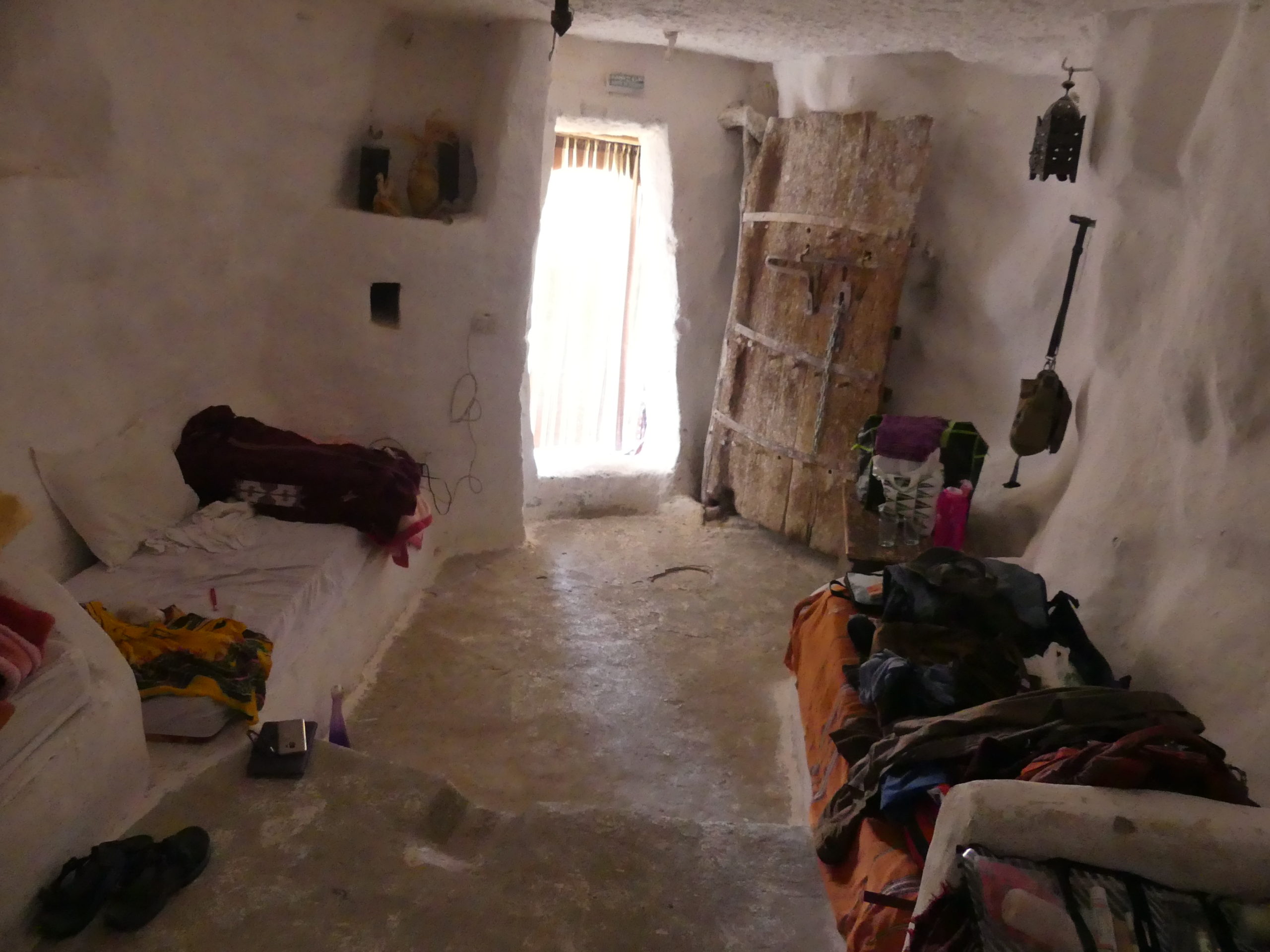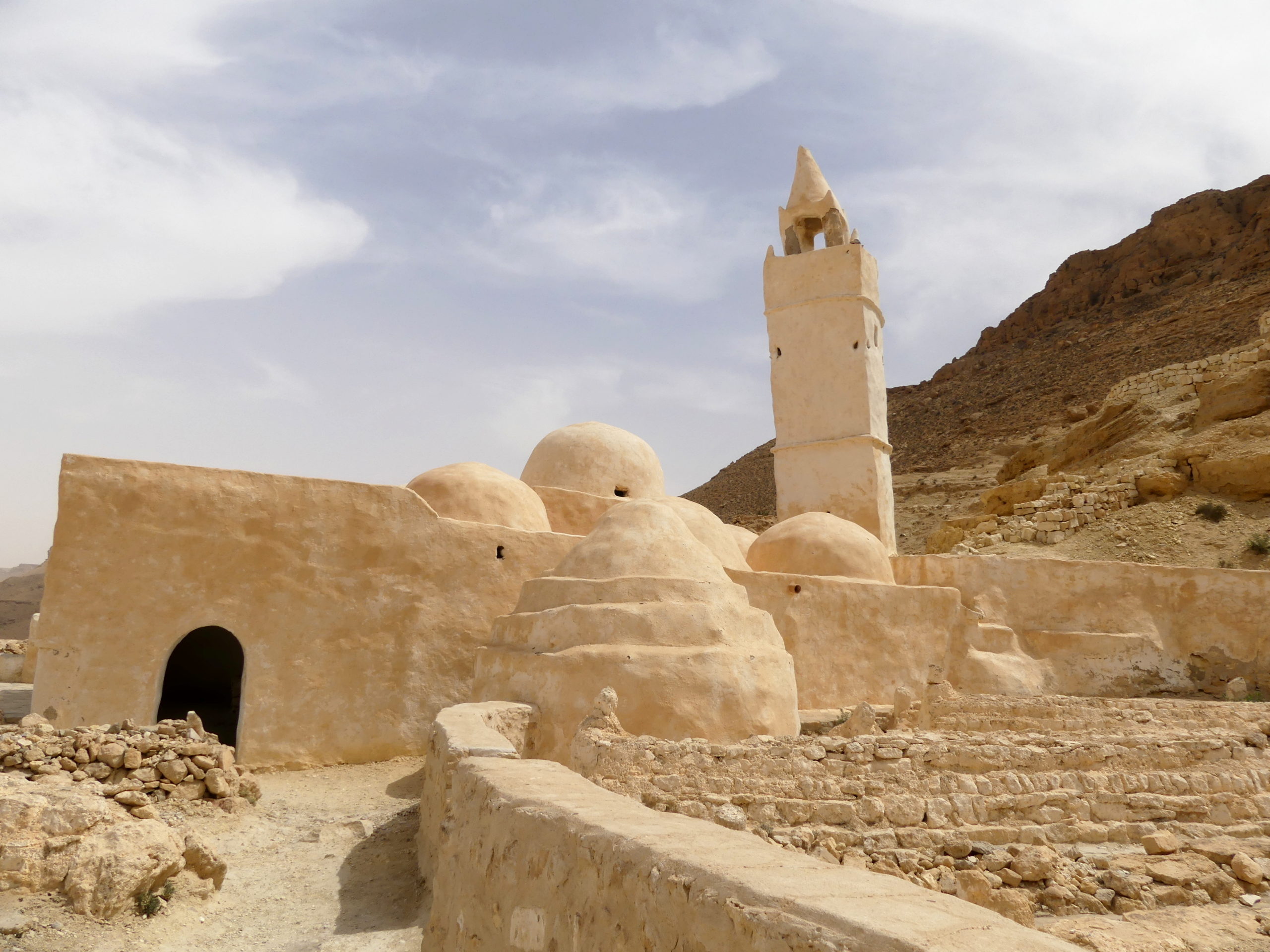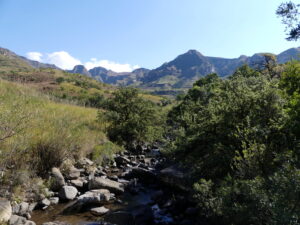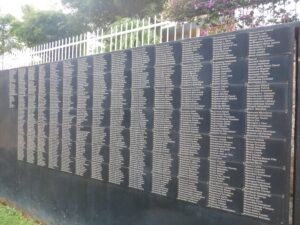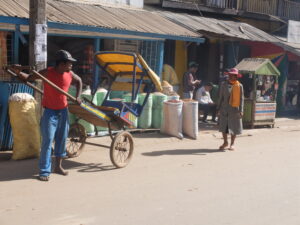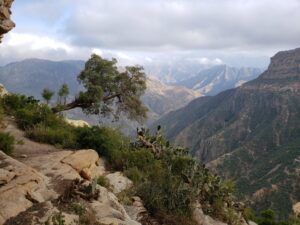In brief: A millennium ago, Berbers built storage bins for grain or added protected caverns to mountain tops, spaces that villagers have used for homes ever since.
We were not surprised to discover that the Berbers of the southern Tunisian desert, some thousand or so years ago, used mountain tops defensively. That’s where they preserved their grain stores against tribal invaders. What was surprising was how they did it. In some places, they formed arrays of large stone cylinders into a kind of supersized honeycomb.
In others like Chenini, they built caves along mountain ridges, supplementing the natural formations with brickwork. For centuries after that, often until recent years, these storage places became cave-like dwellings for modern communities. And, for Star Wars fans, these troglodyte homes might look very familiar…
Chenini & Mountain Top Caves
This mountain top storage and subsequent dwelling place at Chenini used the natural rock of the ridge, supplemented by brick construction. It is perhaps the best preserved and most impressive of the many in the area, frequently visited by groups of tourists. We had the opportunity of living in a “modernized” cave dwelling just across from the ridge, so we could relax for hours with this incomparable view.

Our home as modern troglodytes just across from the mountain top cave village at Chenini. These “apartments” are often shared caves for up to six people, but we were the only ones in this cave during our stay. The beds are straw-filled, yet very comfortable, because they rest on a stone base.
Notice the massive door, which swung on a wood hinge, and needed quite a bit of muscle to open and close. Just outside the door was a compact, but serviceable modern bathroom – a welcome upgrade from the facilities used by the old troglodytes. Like them, alas, we had no hot water.
In just a few minutes one morning, we could walk along the Chenini ridge from our troglodyte room to view the old storage bins and cave dwellings. On the way, we passed a villager and donkey.
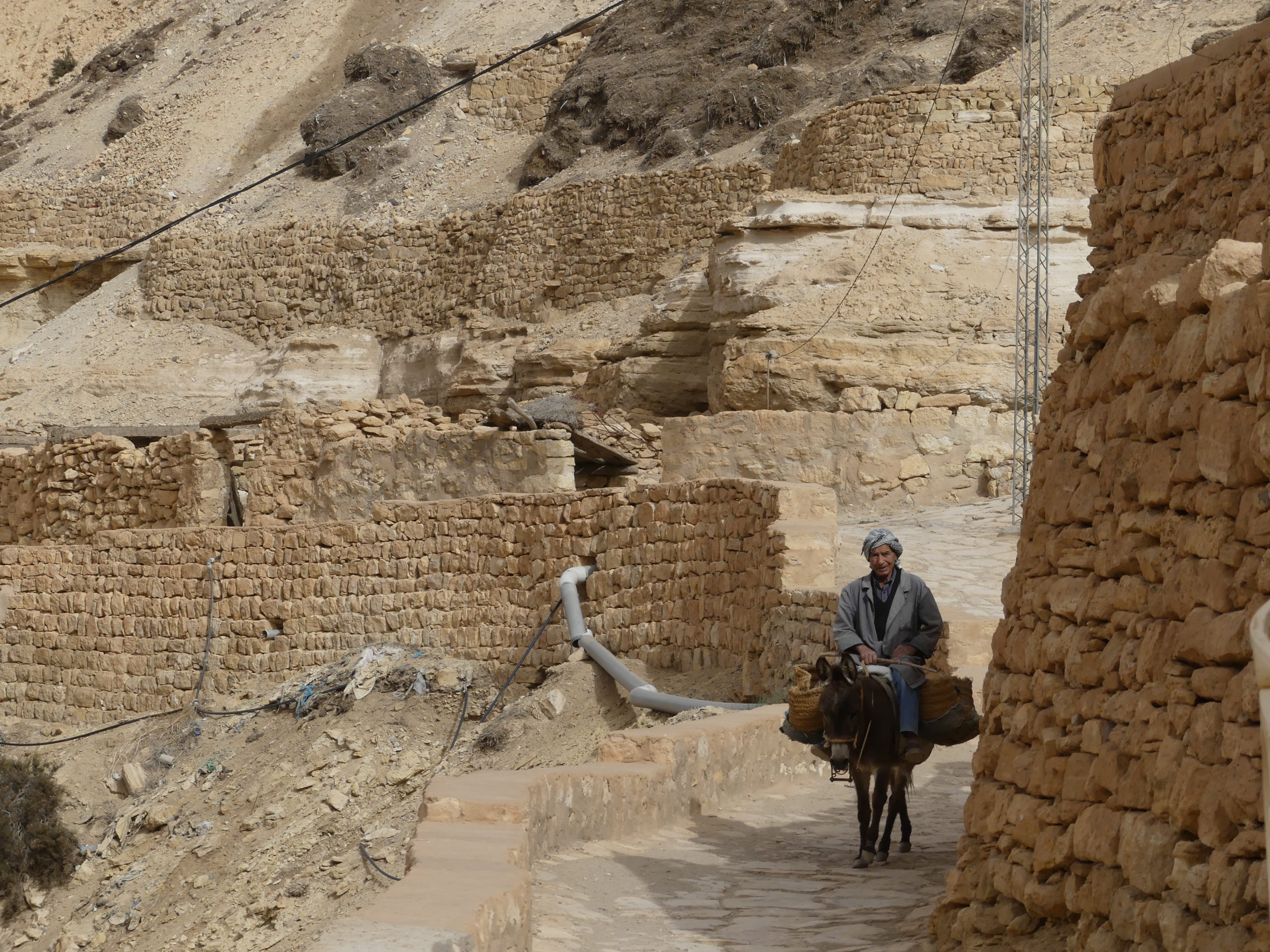
These broad paths at the summit of Chenini surprised us because, from afar, the ridge looked so narrow. But the precipitous drop-off seemed even steeper from up close.
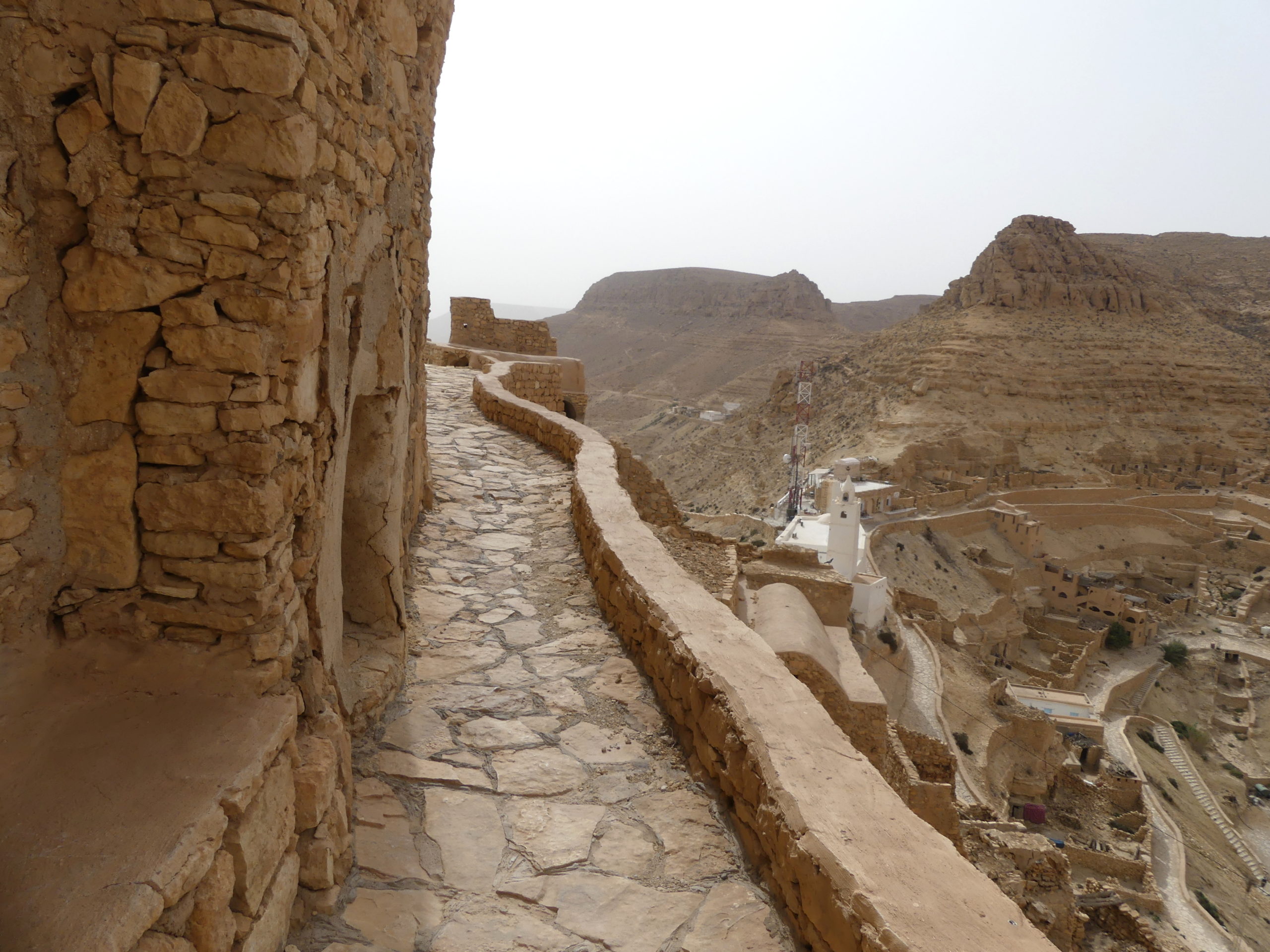
At night, the mountain and valley were blanketed in darkness – and in an extraordinary silence. You could just detect a faint distant note of celebration after the iftar meal ending the day’s Ramadan fast, or the delicate twitter of crickets closer by. Otherwise, all sound was smothered by the vast spaces across the valley floor. We could hear the buzz of our own thoughts. Suddenly, the amplified prayers of the mosque rang out, echoing and redoubling off the distant mountains from the sounding board of the Berber granary wall. In these echoes, the ancient rocks seemed to reflect prayers from the watchtowers of 1000 years past.
The mosque of the Seven Sleepers near Chenini features a leaning tower and tombs in the forefront which are four meters long. It’s an example of sites around the mountains made holy by the presence of Islamic sages and teachers, as well the kinds of legends that sanctified them.
The story, which is included in the Koran, tells of seven Christian men who hid in a cave to avoid persecution for their faith. In that cave, which is now surrounded by the mosque building, they slept for hundreds of years while they grew in height to four meters (13 feet). When finally awakened, the sleepers converted to Islam and then died so they could reach paradise.
A typical valley view amid the desert mountains near Chenini. You can detect signs of dams and channels used over the years to capture water. We saw many dams of piled stones near the villages. At the top left, there’s a peek at the remains of a small mountain-top ksar.
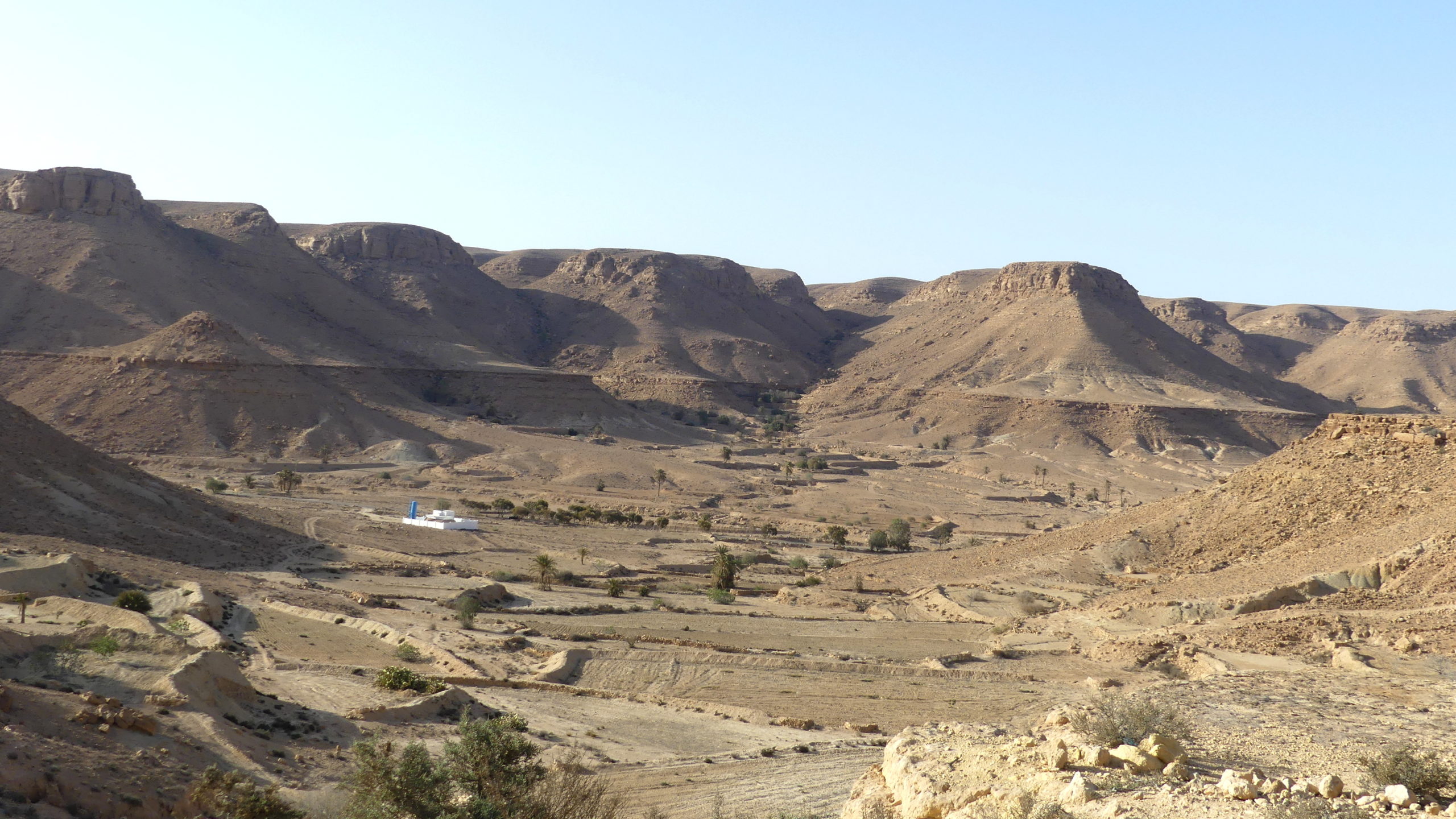
Another mountain top village built by Berbers at Douiret near Chenini, with its centuries-old mosque. Within the last few decades, most of the villagers moved to a new village in the valley. And we could understand why. During our visit, the fierce winds of a sandstorm nearly blew us into the valley. Yet a few hotels and residents remain around the summit.
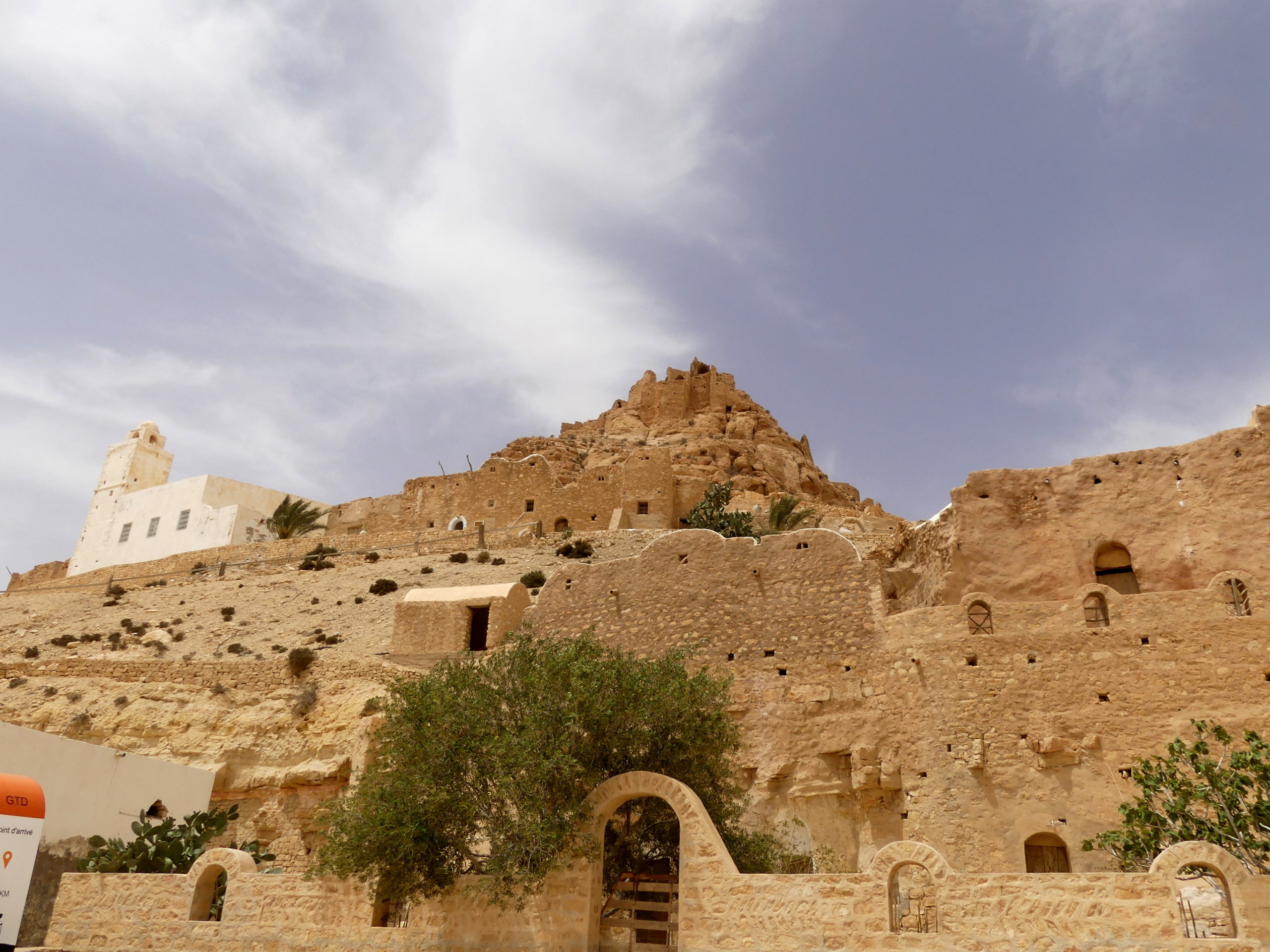
Ksars, the Granaries
Enjoy the enchanting façade of the old grain storage cylinders of the Berbers at Ksar Ouled Soltan, subsequently used as dwellings until they were abandoned for more modern facilities. Ksar is the name for these fortified stations. Notice the somewhat challenging stairways to the top levels. Over time, the communities built a mosque like the one in the background at each Ksar to make prayer and communal gatherings easier.
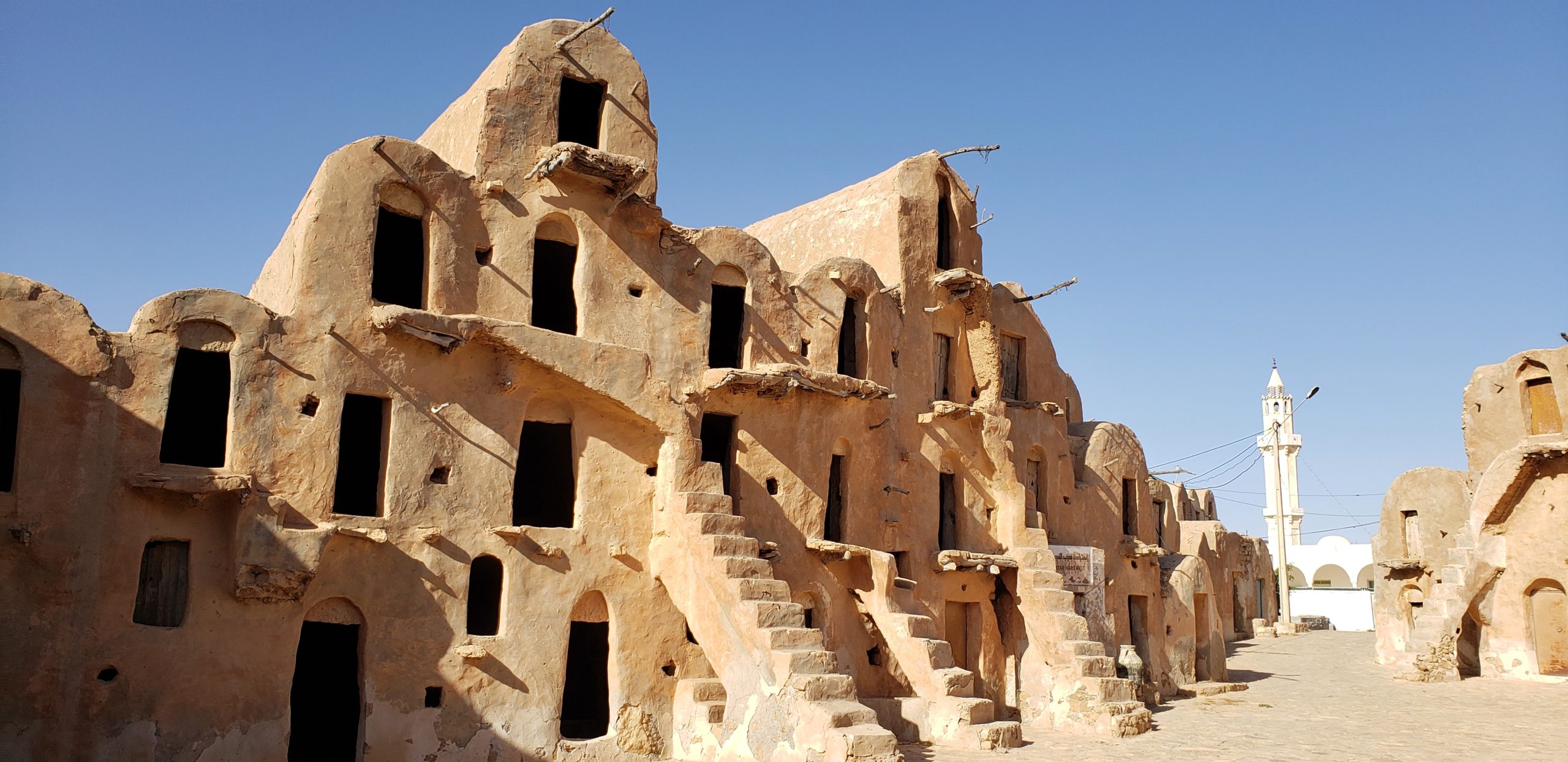
This Ksar is one of many viewable along a 40 kilometer loop drive from Tataouine. That name might be familiar…Not only did George Lukas borrow the name for Luke Skywalker’s hometown, but he used this particular site for a remote village.
A rooftop view of the granaries at Ksar Ouled Soltan, where the Star Wars crew worked. There was a splendid view across the valley, but we found more intriguing what this perspective revealed about the use of brickwork and limestone to seal the chambers, as well as the strength of the structures after 1000 years or more. To reach this top level, we needed to mount steep, narrow stone steps without rails (like those in the other photo).
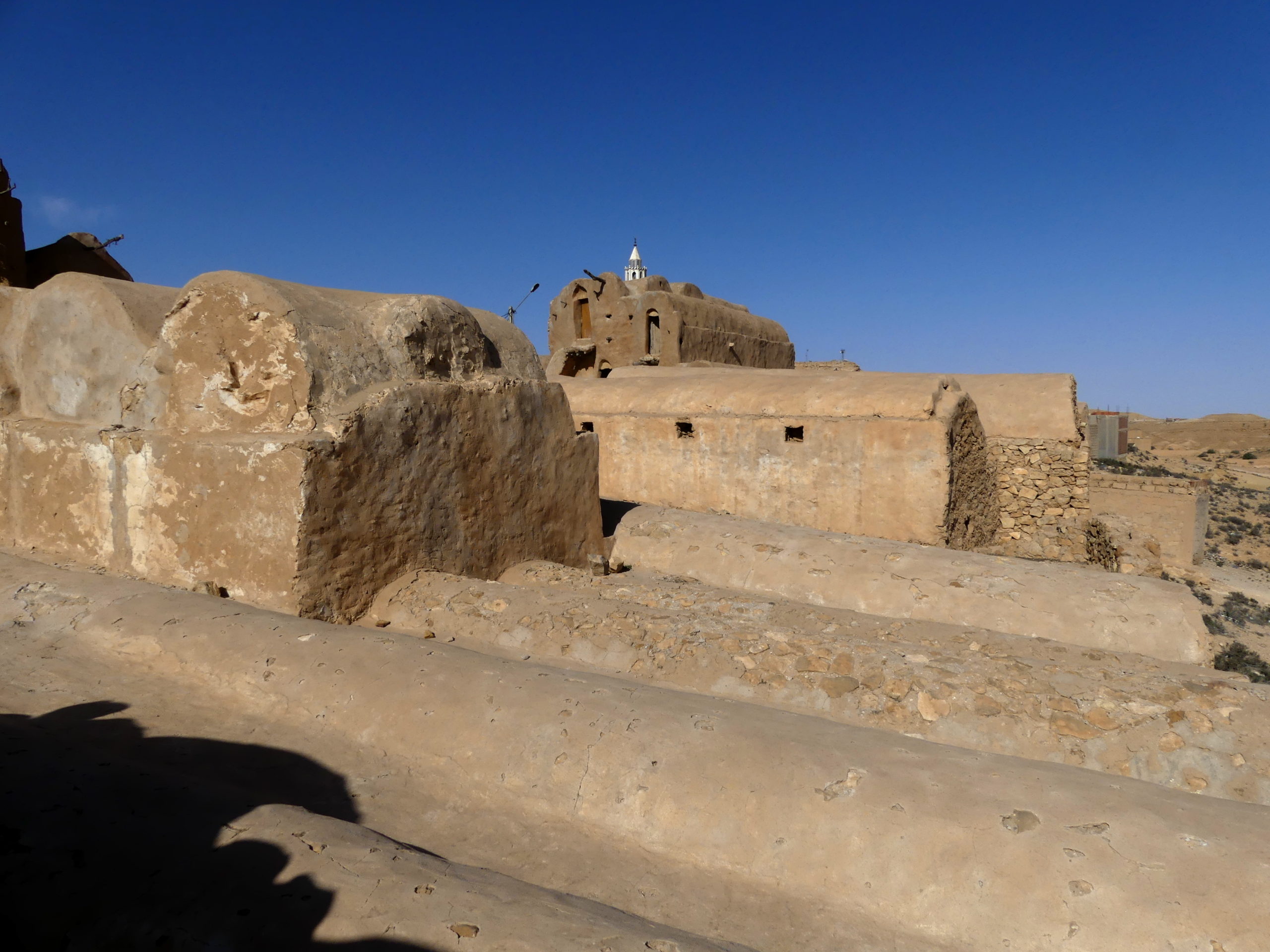
This view of Ksar Ezzara, including a charming renovated mosque tower for the village, shows how the granary cylinders were transformed into more usable dwellings over time. These modified caverns were still being used, it seemed.
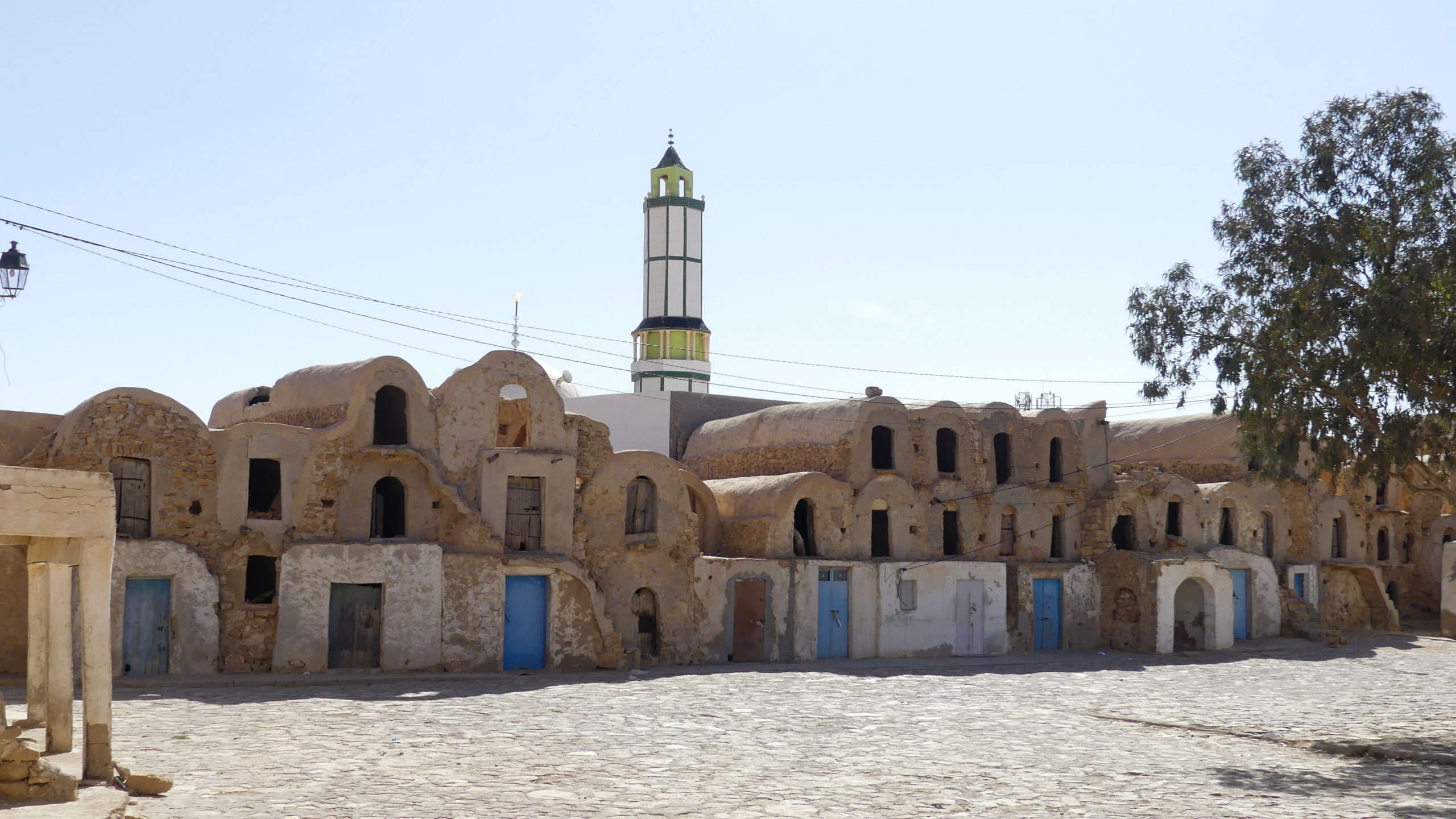
Most of this Ksar, or granary array, at Ezzara near Tataouine was in greater disrepair, but we just happened to find this shadowy inner courtyard with an impressive four tiers of cylinders that still appeared usable.
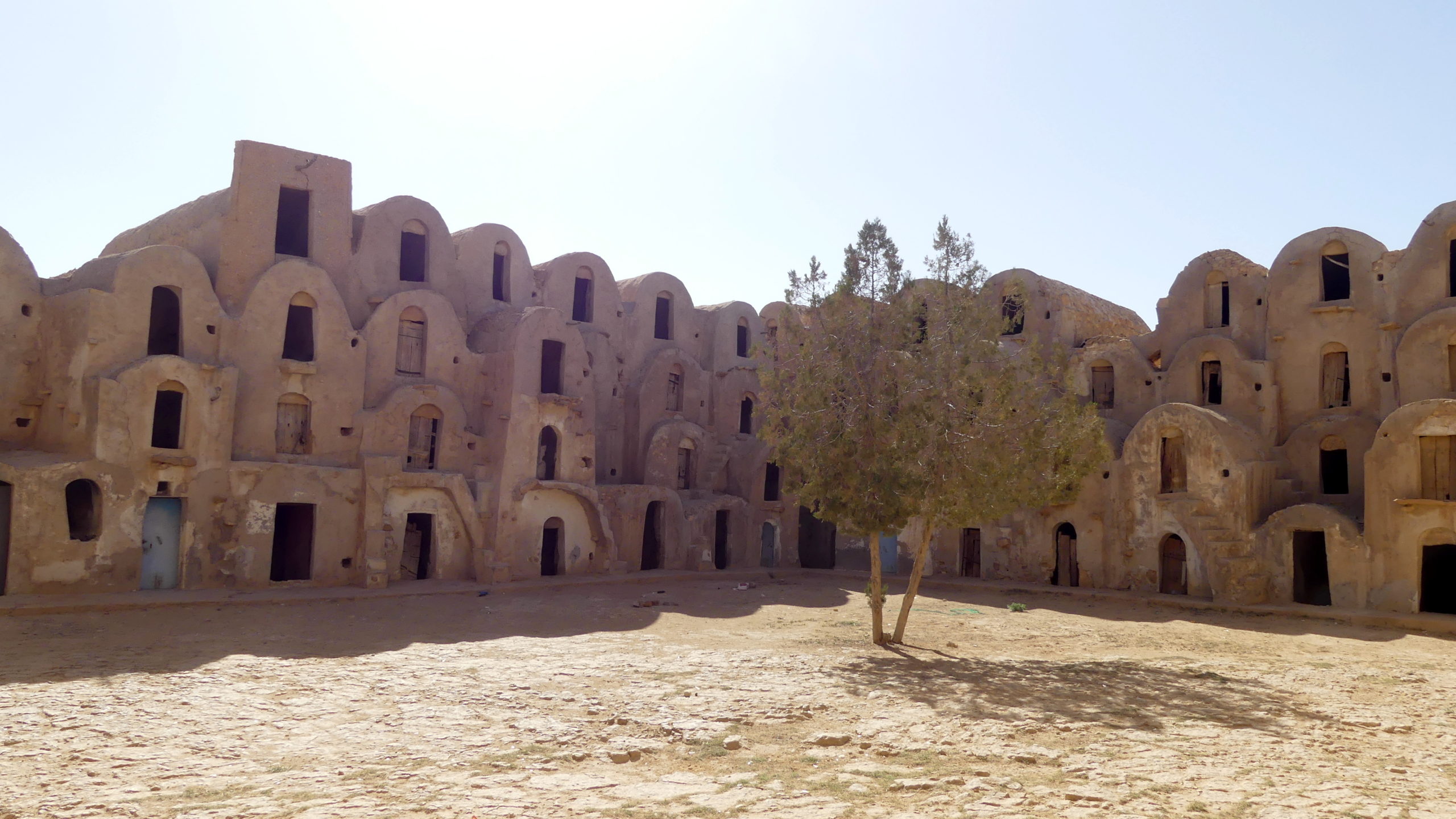
A different perspective on one of the abandoned ksar granaries at Gattoufa near Tataouine reveals how the Berbers mounted cylinders upon each other and sealed them up. That sparkling renovated mosque is still used by the villagers living in newer homes around it.
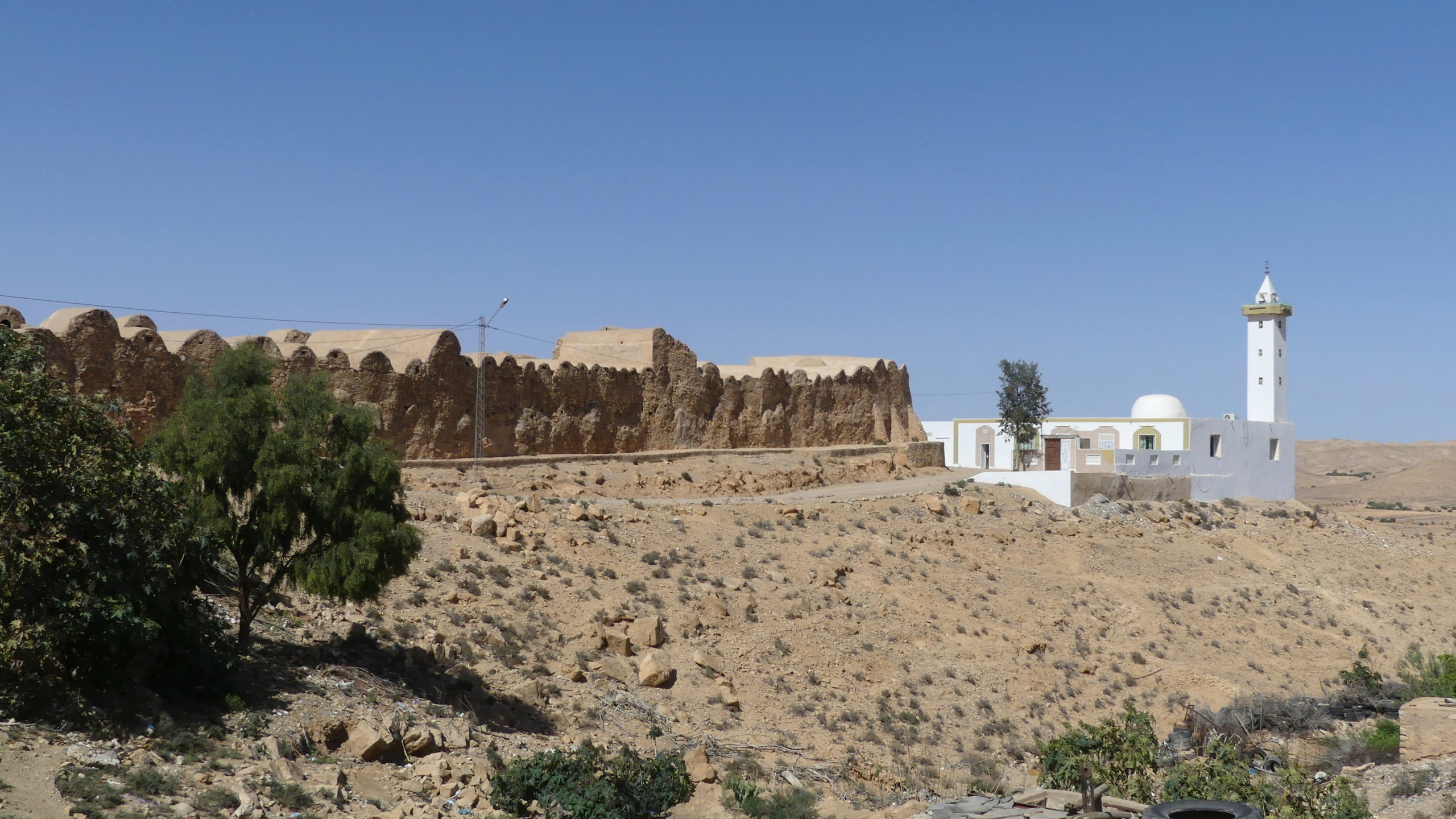
(To enlarge any picture above, click on it. Also, for more pictures from Tunisia, CLICK HERE to view the slideshow at the end of the itinerary page.)


